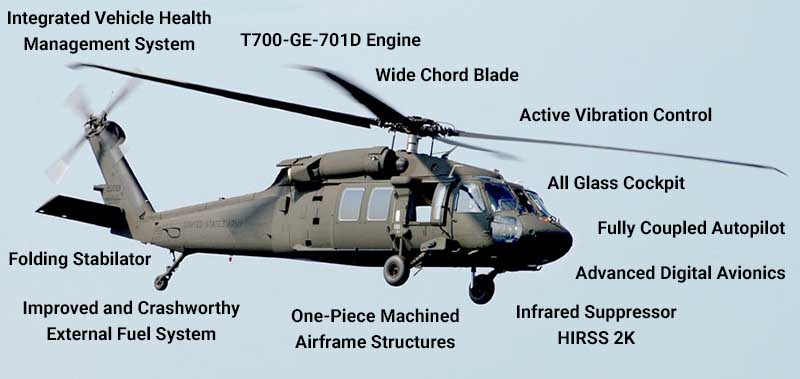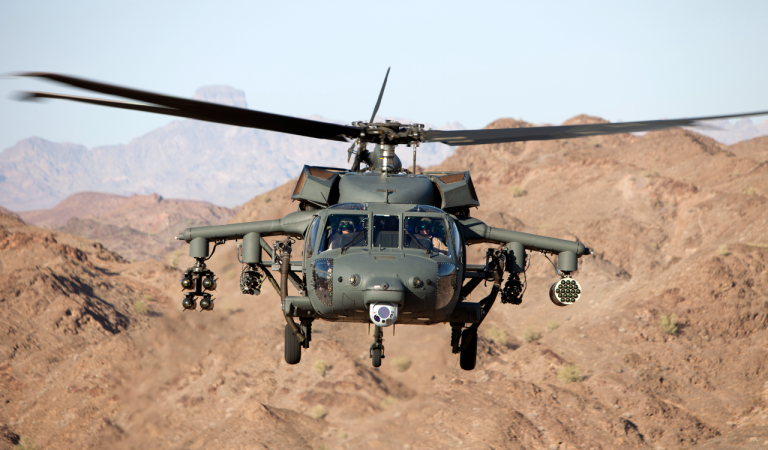The Relevance of the UH 60 in Military Procedures and Disaster Relief Efforts
The Relevance of the UH 60 in Military Procedures and Disaster Relief Efforts
Blog Article
UH-60: Technologies in Modern Helicopter Style
The UH-60 helicopter stands as a standard in modern-day aeronautics, showcasing significant advancements in design and modern technology that provide to the advancing demands of army procedures. As we discover the advancement and vital advancements of the UH-60, it ends up being essential to take into consideration exactly how these growths affect not only present applications however also the future landscape of helicopter design.

Advancement of the UH-60
The development of the UH-60 Black Hawk helicopter stands for a significant turning point in aerospace design and military air travel. Introduced in the late 1970s, the UH-60 was created by Sikorsky Aircraft to fulfill the United States Army's requirement for a flexible utility helicopter capable of performing a variety of objectives. Its design emphasized ability to move, sturdiness, and rate, setting new criteria for operational efficiency.
The UH-60 features an unique four-blade blades system, which boosts lift and security, permitting it to operate efficiently in diverse atmospheres. Its airframe is built from innovative composite products, adding to a decrease in weight while preserving structural honesty. The helicopter's layout also integrates improved aerodynamics, which boosts gas effectiveness and boosts range.
Over the years, the Black Hawk has actually gone through multiple upgrades to enhance its capabilities, including improved engines, advanced flight control systems, and modular systems for simple upkeep and versatility. The helicopter's ability to carry out objectives ranging from troop transportation to medical discharge has strengthened its role as a foundation of U.S. armed forces operations. The UH-60 Black Hawk continues to be an archetype of how development in helicopter design can considerably impact army effectiveness and functional flexibility.
Advanced Avionics Systems
Advancements in avionics systems have changed the capacities of modern-day helicopters like the UH-60 Black Hawk, improving functional efficiency and situational awareness (UH 60). The combination of innovative avionics permits for boosted interaction, flight, and navigation management, making the UH-60 more versatile in varied goal profiles
One of the vital features is the innovative digital cabin, which utilizes multifunction screens that offer real-time information, ensuring pilots have immediate accessibility to essential flight info. This streamlining of details reduces pilot workload and enhances decision-making processes during complex operations. Furthermore, the incorporation of general practitioner and inertial navigation systems enables precise positioning and path planning, enhancing mission execution in tough atmospheres.
In addition, advanced avionics systems improve communication capabilities with protected data web links and voice interaction systems, enabling seamless coordination with ground forces and other airplane. The combination of automatic trip control systems further adds to improved security and control, specifically in unfavorable climate condition or during low-altitude maneuvers.
Engine and Efficiency Enhancements
Engine efficiency in modern-day helicopters has actually taken a considerable jump ahead, driven by technologies that increase power, integrity, and performance. The UH-60 Black Hawk, for instance, uses the T700-GE-701C engine, which features a dual-channel, full-authority digital engine control system.
Furthermore, the assimilation of engine health tracking systems allows for real-time diagnostics and anticipating maintenance, significantly enhancing functional reliability. These systems not just alert crews to possible concerns prior to they come to be vital however also facilitate a lot more effective upkeep organizing, thus reducing downtime.

Products and Structural Innovations
Recent growths in materials and architectural style have actually changed modern-day helicopter building, boosting both efficiency and sturdiness. The introduction of innovative composite materials, such as carbon fiber reinforced polymers, has substantially reduced weight while keeping architectural honesty. This shift not just improves gas efficiency yet also raises payload ability, allowing helicopters like the UH-60 to do even more varied missions.
Furthermore, technologies in light weight aluminum alloys and titanium parts have actually contributed to boosted resistance to rust and tiredness, extending the life-span of essential airframe components. The tactical usage of these materials see this page has actually led to a decrease in maintenance requirements and enhanced overall functional readiness.

Furthermore, the integration of computer-aided layout (CAD) and additive manufacturing modern technologies has made it possible for much more complex geometries and try this lightweight structures, optimizing the wind resistant efficiency of helicopter layouts. These improvements facilitate rapid prototyping and manufacturing, allowing makers to react promptly to evolving mission requirements.
Safety And Security and Survivability Features
Safety and survivability attributes in modern-day helicopter layout have actually ended up being extremely important, mirroring the increasing demands for goal performance in challenging environments. The UH-60 Black Hawk, a noteworthy example, integrates advanced innovations to improve crew and passenger security.
The helicopter also employs a ballistic security system, which includes armored team seats and essential systems protecting, decreasing susceptability to little arms fire and shrapnel. Enhanced situational recognition is attained through innovative avionics and sensor technologies, enabling pilots to spot and prevent hazards efficiently.
Furthermore, the combination of redundancy in critical systems-- such as double engines and multiple flight control channels-- makes sure ongoing operation even if one system stops working. The UH-60 is geared up with sophisticated emergency flotation gadgets, boosting survivability in water touchdowns. Collectively, these features not only improve the safety of employees yet additionally enhance goal success prices in aggressive settings, showing the commitment to excellence in helicopter layout.
Conclusion
The UH-60 helicopter represents a substantial improvement in contemporary air travel technology, including cutting-edge products, cutting-edge avionics, and robust safety and security attributes. Its development shows a dedication to boosting performance and operational effectiveness while making sure pilot and staff survivability. The combination of light-weight compounds and progressed navigating systems highlights the helicopter's flexibility in numerous military goals. On the whole, the UH-60 functions as a benchmark for future developments in helicopter layout, embodying durability and convenience in contemporary military procedures.
The UH-60 helicopter stands as a criteria in modern air travel, showcasing try this considerable innovations in design and modern technology that provide to the progressing demands of military procedures. As we explore the evolution and essential developments of the UH-60, it ends up being important to think about just how these advancements influence not just present applications but also the future landscape of helicopter layout.
Presented in the late 1970s, the UH-60 was made by Sikorsky Aircraft to satisfy the United States Military's requirement for a versatile energy helicopter capable of performing a variety of goals. The UH-60 Black Hawk stays a prime example of how technology in helicopter layout can substantially impact armed forces effectiveness and operational adaptability.
In general, the UH-60 offers as a standard for future advancements in helicopter layout, embodying resilience and convenience in modern military procedures.
Report this page